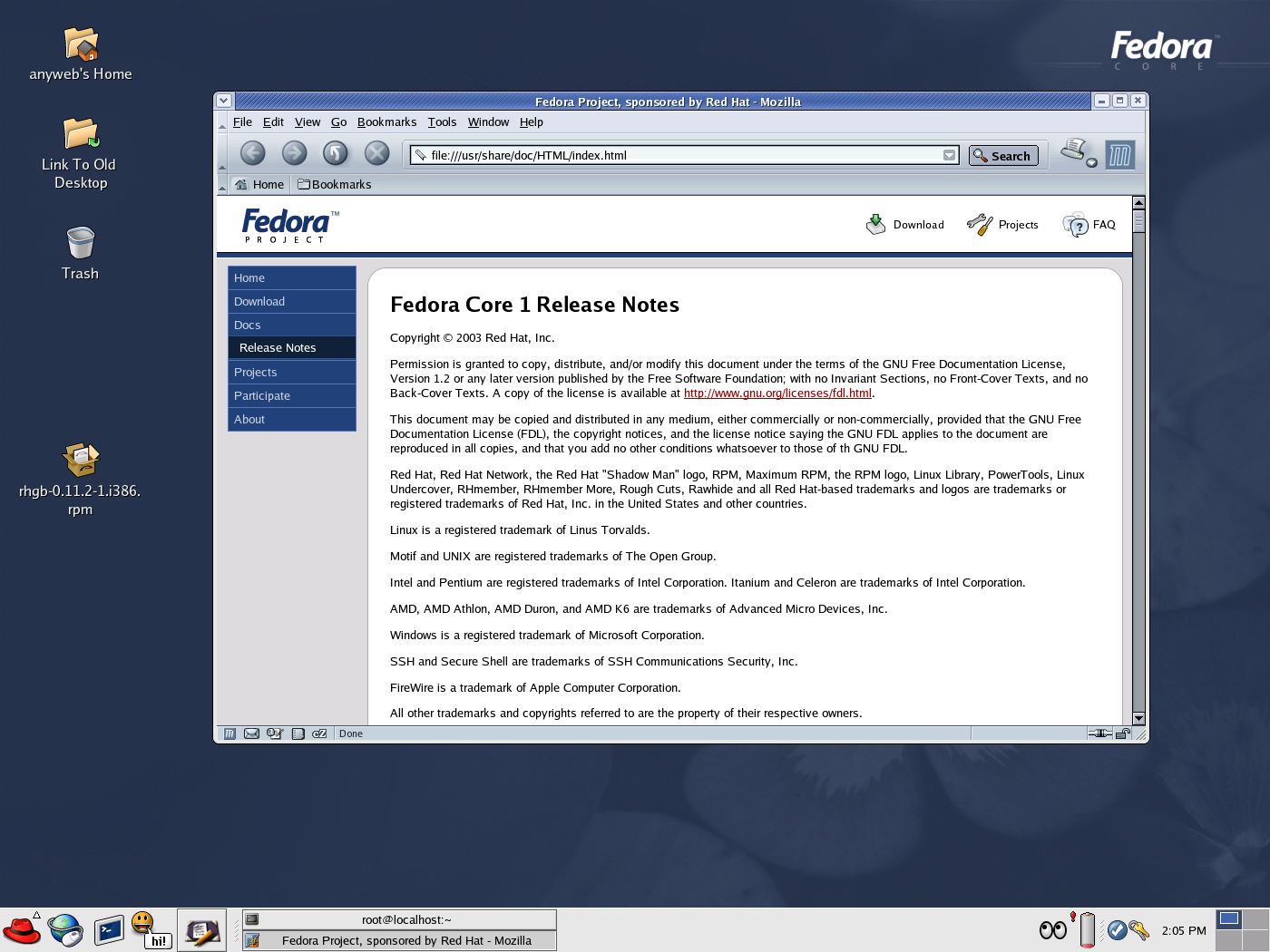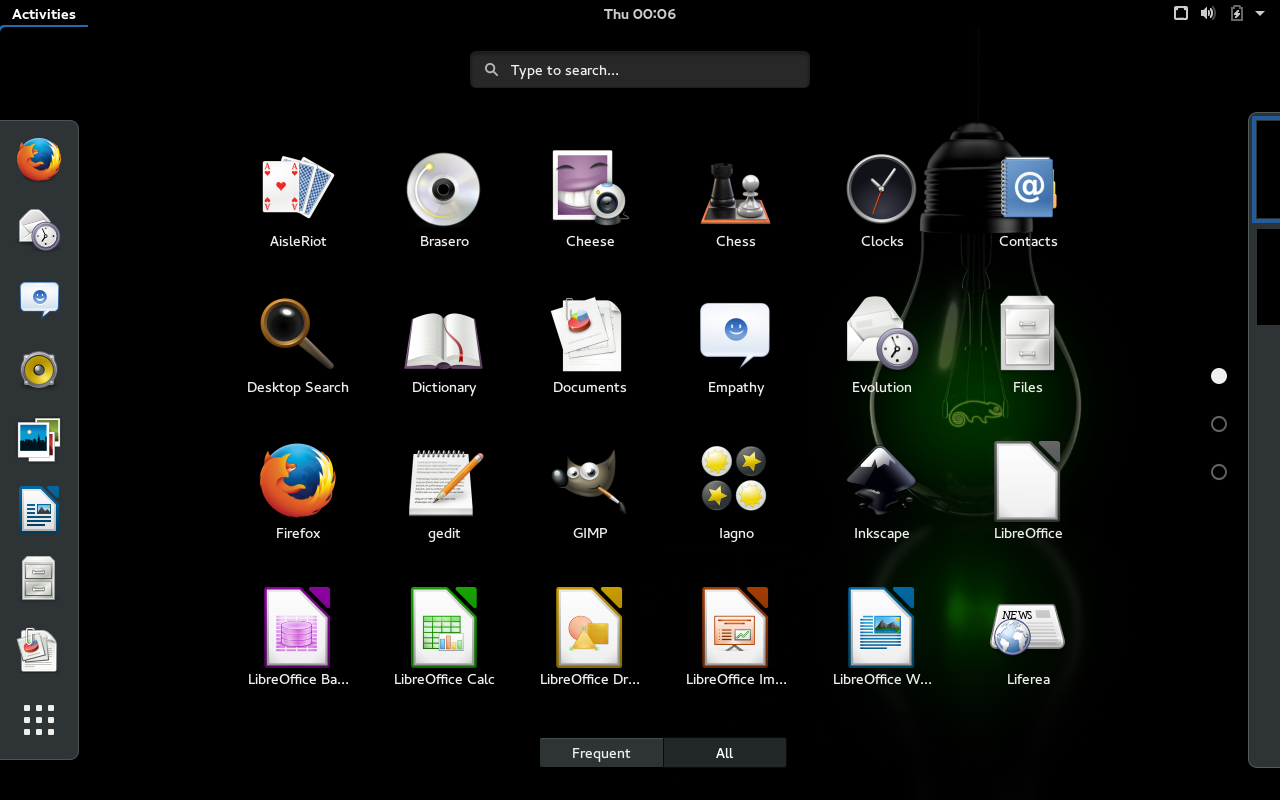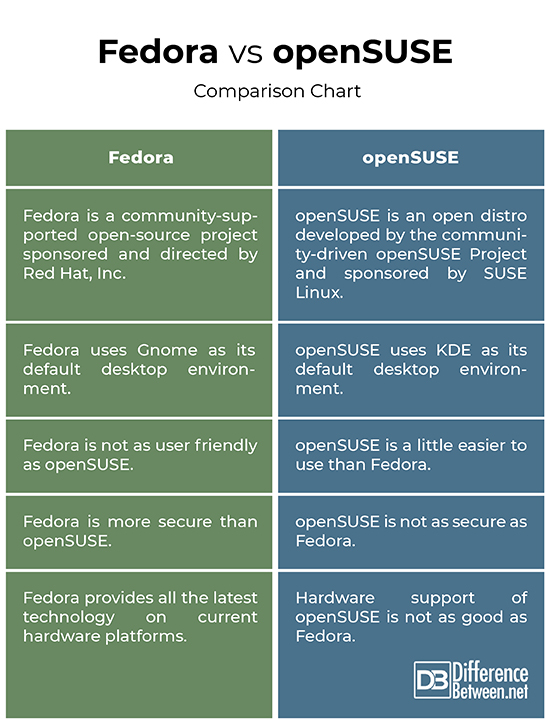Difference Between Fedora and openSUSE
The decision making process to choosing the right Linux distro is very crucial. This is because there is not just any one unique Linux distro; in fact, there are too many, perhaps a few hundred, Linux distros available out there. Some are generalized distros that can be used as a desktop, server, or workstation; while others are specially tailored for businesses or computer enthusiasts. This makes choosing the right one for your needs all the more important. The Linux experience can be radically different from one distro to another. That being said, Fedora and openSUSE are the two leading and popular Linux distros available. While Fedora is upstream for Red Hat Enterprise Linux (RHEL) and the big daddy of the RPM family, openSUSE is a popular community-supported program sponsored by SUSE Linux and other companies. We pit the two distros against each other to see which one’s better on the basis of how well they perform and how stable they are.

What is Fedora?
Fedora is a community-supported open-source project sponsored and directed by Red Hat – the world’s second biggest Linux contributor. It is a general-purpose operating system built over the Linux OS kernel architecture which serves as a source of software innovations RHEL releases. The roots of Fedora come from Red Hat Linux, which ended its development life under that name in 2003. At that time, Red Hat split its Red Hat Linux distribution two ways – Fedora Core (now called Fedora) and Red Hat Enterprise Linux (RHEL).

What is openSUSE?
openSUSE, formerly SUSE Linux, is a free, community-driven Linux system sponsored by SUSE Linux along with other companies. Like Fedora, openSUSE is guided by a common open-source philosophy focused on stability and flexibility. openSUSE was released in 2005 after Novell – a Utah-based major corporation that is marketing Linux in the enterprise market – purchased SUSE Linux in 2003. In 2011, Novell was acquired by The Attachmate Group which merged with the British firm Micro Focus in 2014, splitting SUSE into two autonomous companies. As a result, SUSE became an independent company with its headquarters in Germany.
Difference between Fedora and openSUSE
-
Basics
– Fedora is a community-supported open-source project sponsored and directed by Red Hat, Inc. Red Hat owns Fedora trademarks and makes legal decisions for Fedora based on its own legal counsel. It’s a general-purpose operating system built over the Linux OS kernel architecture which serves as a source of software innovations RHEL releases. openSUSE, on the other hand, is a potential alternative to Red Hat and an open distro developed by the community-driven openSUSE Project and sponsored by SUSE Linux and a couple of other companies.
-
Philosophy
– Similar to Fedora, openSUSE is the community version of SUSE’s commercial distro guided by a common open-source philosophy that focuses on innovative community infrastructure, and stability and flexibility. Both are like a test playground for new ideas and technologies, and both has a strict policy of using only open and free software in their official repositories. However, the only difference is that Fedora uses Gnome as its default desktop environment, while openSUSE uses KDE. openSUSE also includes a lot of free software, but it’s a bit conservative than Fedora.
-
User Friendliness
– With a wide selection of software for PCs, openSUSE makes for a great option for beginners. It is one of the best distros, thanks to its unique configuration and installation tool, YaST, which is an outstanding element of the SUSE-verse and perhaps the easiest one to use in the Linux ecosystem. openSUSE contains all the stable packages with a release cycle of about eight months which is followed orthodoxly. It is comparable to Fedora but probably a little easier than Fedora. Fedora is not as user friendly as openSUSE.
-
Stability
– Despite being a cutting-edge Linux-based distribution, Fedora is surprisingly stable, courtesy of Red Hat, the world’s second biggest Linux contributor. Red Hat is still the dominant player when it comes to commercial Linux products. openSUSE, on the other hand, is also a stable distribution with a stable rolling release version called Tumbleweed which is a bleeding-edge version with frequent updates of the newest packages. openSUSE also features a unique, automated testing tool that is used to test several combinations of hardware and installation options automatically each time a new build is ready.
-
Security
– Fedora supports IPsec for connecting remote hosts and networks to each other using a secure tunnel on a common carrier network such as the Internet. It uses Internet Key Exchange (IKE) for sharing keys between hosts across the Internet in order to ensure mutual authentication and secure associations between connecting systems. openSUSE, on the other hand, is also secure as it enables AppArmor by default and a firewall, juts like Ubuntu. However, it is not as secure as Fedora. openSUSE has YaST that is the command center for the entire distribution and which can be used to configure other options to secure the OS.
Fedora vs. openSUSE: Comparison Chart

Summary of Fedora vs. openSUSE
In a nutshell, openSUSE is like Fedora in that it’s an RPM-based distribution and both has a strict policy of using only open and free software in their official repositories. However, openSUSE uses different tool for managing those packages. Graphically, it uses a unique, automated tool called YaST, which is short for Yet another Setup Tool. openSUSE installations typically use KDE as their default desktop environment, while Fedora uses Gnome as its default desktop environment. Similar to Fedora, openSUSE is guided by a common open-source philosophy focused on flexibility and stability. Besides, both are the leading and stable Linux distros available.
- Difference Between Caucus and Primary - June 18, 2024
- Difference Between PPO and POS - May 30, 2024
- Difference Between RFID and NFC - May 28, 2024
Search DifferenceBetween.net :
Leave a Response
References :
[0]Image credit: https://commons.wikimedia.org/wiki/File:GNOME_3.16_applications_overview_on_openSUSE_Leap_42.1.png
[1]Image credit: https://commons.wikimedia.org/wiki/File:Fedora_Core_1.png
[2]Castro, Jose Dieguez. Introducing Linux Distros. New York: Apress, 2016. Print
[3]Negus, Chris. Linux Bible. Hoboken, New Jersey: John Wiley & Sons, 2008. Print
[4]Negus, Chris and Francois Caen. Fedora Linux Toolbox. Hoboken, New Jersey: John Wiley & Sons, 2007. Print
